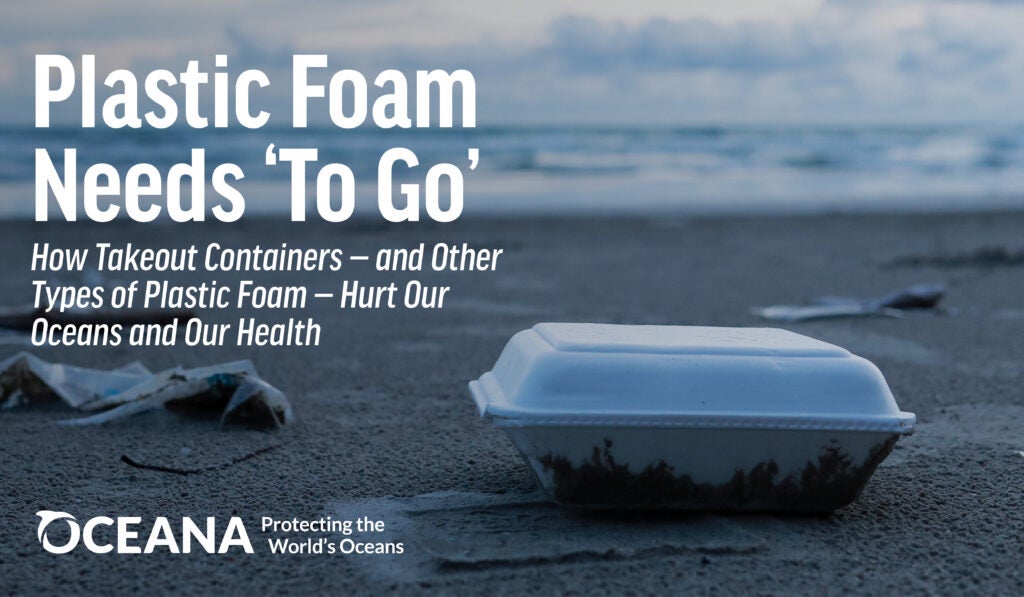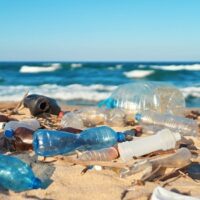Report | April, 2025
Plastic Foam Needs ‘To Go’
Plastic foam, formally called expanded polystyrene, is everywhere — from takeout containers to delivery packages.
It is fashioned into cups, clamshell food containers, packing peanuts, coolers, and even floating docks, but the material’s widespread use comes at a steep cost to the environment, wildlife, and human health.
Plastic foam is both lightweight and brittle. Because it is so light, when plastic foam breaks apart, those tiny pieces can easily be carried far and wide by wind and water, making it one of the most abundant types of plastic pollution found in U.S. rivers, lakes, and marine environments. Plastic foam affects a wide variety of ocean wildlife, including sea turtles, seals, and shorebirds, and poses significant health threats for people. Made from fossil fuels and toxic chemicals, plastic foam production exacerbates health risks to the communities that live on the fenceline of production plants and contributes to climate change.
Plastic foam is all around us and, increasingly, part of us. Oceana assessed years of research on the pervasiveness and impacts of plastic foam and other types of polystyrene, which will worsen over time unless governments and companies take action to reduce its production and use.
Oceana is calling on local, state, and federal government leaders to phase out the production and use of single-use plastic foam — including foodware, packing peanuts, and foam coolers — and move to reuseable and refillable products. National polling released in 2025 found that 78% of registered U.S. voters support policies to reduce single-use plastic foam.
Media contact: Ariana Miller, amiller@oceana.org




